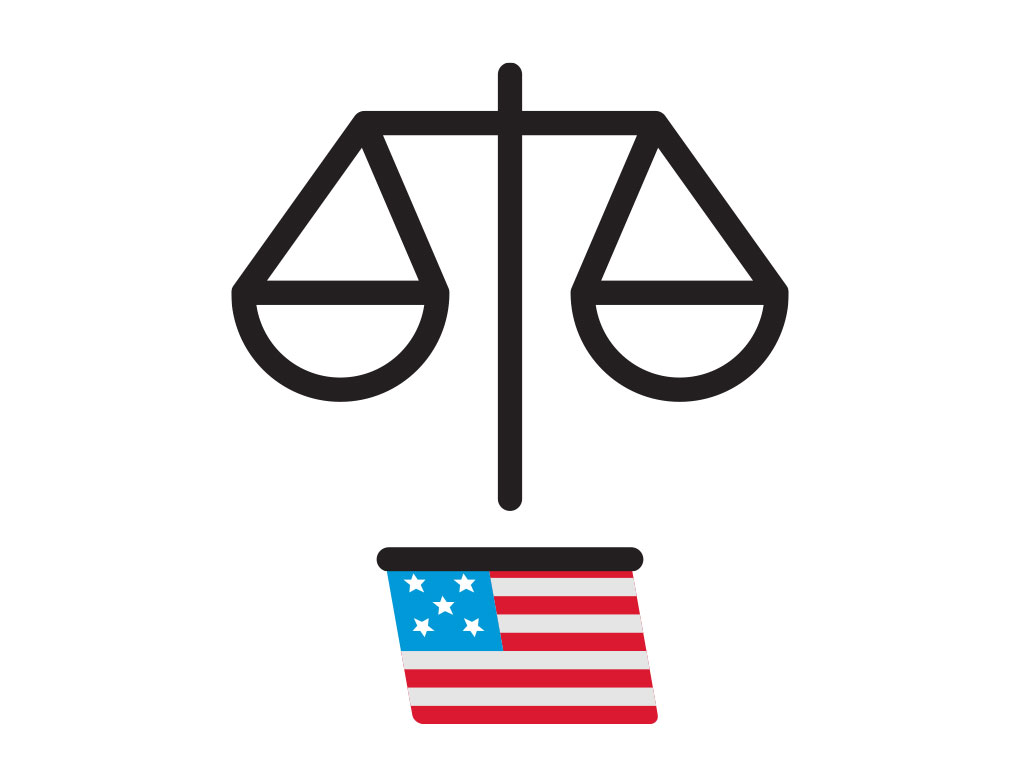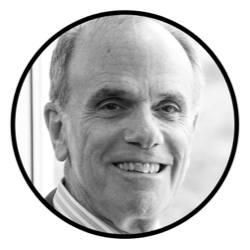Forecast
How will climate change affect our health?
What is the future of the social justice movement?
How will we get to work, to the store, go on vacation in the decades to come?
Will social media—and the disinformation it enables—continue to proliferate?
What about the waves of nationalism we’re seeing across the globe?
To answer these questions and more, GW Magazine tapped professors from across the university to get their forecasts for the future in their discipline, from transportation to pandemics to education, health equity and criminal law reform.
These 10 faculty members offer prescriptions along with predictions on how to address some of our most pressing challenges—and a clear message that much depends on what we do today.
Compiled by Rachel Muir
THE FUTURE OF...Pandemics
WITH
Lynn Goldman
Dean, Milken Institute School of Public Health
As disheartening as this may sound, there’s a 100 percent chance of another pandemic unfolding in the not-too-distant future on a global scale. Over many years, we have had at least one in every generation. And I expect to see more frequent emergence of deadly viral pathogens.
The reasons have to do with technological innovation and interconnectivity. We are now populating every corner of the globe, utilizing every bit of the planet and connecting with every animal species. These conditions are ideal in terms of creating new human diseases through animal to human transmissions—basically, an animal disease that becomes a human disease via first a conversion that allows it to be passed from the animal to a human and a second conversion that allows it to be easily transmitted to other humans.
In fairly recent memory, it’s what brought Ebola forward, what brought SARS forward and also the H1N1 flu. These viruses have more opportunity for rapid spread than past pandemics, like the so-called Spanish flu in 1918, because of widespread airline travel and much more global connectivity.
In this pandemic, our scientific and technological ability to diagnose the disease and develop a vaccine have been very impressive. When you look back at 1918, we didn't understand genetics, we couldn’t sequence DNA and RNA, and we had no vaccines for viruses.
Today, we already, within a year, have multiple effective vaccines. It also took only hours for the Chinese to determine the unique genetic sequence of SARS-CoV-2, the novel coronavirus that causes COVID-19, and that sequence was shared openly across the global scientific community.
But our ability to do what I consider to be the easier stuff, like the logistics around getting the vaccine manufactured, distributed and in everybody's arm, has fallen far short. I hope to see in the wake of SARS-CoV-2 that at long last the world pays attention to what public health has been saying for a while—that we need a stronger and more prepared public health infrastructure.
We also need to stockpile critical supplies like masks and other protective gear. We need better data systems and systems of communication. And public health organizations need to take pandemics seriously from the get-go. Public health agencies, including those in the U.S. and the World Health Organization (WHO), kept assuming this would be like the first SARS or flu, and that we would be able to control it by identifying people with symptoms and isolating them, and that's simply not the case. We should have heeded the early warnings from the Chinese. At the same time, they should have collaborated with the WHO on investigating what exactly was going on.
My hope is that we will be better prepared next time. Because as I said at the beginning, there will be a next time. And probably sooner than we would like. On the brighter side, we’re already seeing positive changes. For example, after our 2018 study looking at excess deaths in Puerto Rico due to Hurricane Maria, the Centers for Disease Control and Prevention is now accounting for deaths indirectly, as well as directly, caused by the virus.
But changes don't happen organically, they don't happen magically, we have to push for them. Our hope is that the new leadership across the government will make a difference not only in more quickly ending the SARS-Cov-2 pandemic but also in reforming our public health system to make it more effective, resilient and prepared for future pandemics.
THE FUTURE OF...Transportation
WITH
Samer Hamdar
Associate Professor of Civil and Environmental Engineering,
School of Engineering and Applied Science
Transportation is likely to look a lot different even in the near future due to diversification in both stakeholders and means of transportation and an advent of new technology.
We’re seeing transportation systems become more decentralized. Traditionally in the United States, the federal and local governments have been the supplier of transportation services. We pay taxes, and the governments are responsible for maintaining the infrastructure when it comes to roads.
Governments are now increasingly contracting with private companies to build, operate and maintain surface-level transportation, such as roads and transit systems. These public-private consortiums have led to improvements in infrastructure and productivity gains, allowing some competition but still under government regulation to ensure fairness and equity.
We also are seeing diversification on the user side. Especially in urban areas, we have shared mobility services like Uber and Lyft and also micro-mobility tools like scooters and bike shares. These allow users more options and increase the efficiency of the transportation network, especially when dealing with first- and last-mile trips. In the long term, we will be less reliant on a specific mode of transportation, such as the Metro or your own car.
The diversification will continue, driven by technology. New technologies like autonomous and electric cars will be important as will smartphone innovations that allow users to choose from different suppliers in a dynamic manner.
There will be a time in the not-so-distant future when many Americans don’t own a car or maybe don’t even know how to drive one. With autonomous vehicles, we may no longer have the standard personal ownership construct; Instead, they could be shared among users. With electric vehicles, gas stations will become obsolete and changes in energy dissemination and battery technology will be needed.
I think we will also move to autonomous electric transit systems, including buses and rail systems, which will be integrated to provide more efficiency and more capacity. Services, like deliveries, will be more automated and connected, with the possibility of using drones. Urban air mobility will ultimately become a reality, leading the way to additional changes in our cities and their infrastructures.
For long trips, we’re not going to have autonomous planes anytime soon, but we are moving toward smaller planes that are more fuel efficient. We are also seeing airlines receiving more flexibility to alter routes in a way that economizes energy consumption.
Transportation is not a derived activity anymore; it is becoming an industry and an economy in and of itself in which it’s possible to monetize the movement of people and goods while developing systems that are more accessible and efficient.
We have already seen major companies such as Google, Uber and Tesla racing to be part of this growing industry. These are not traditional airline, rail or car companies. These are technology and service companies, and their major entrance into the global transportation market is just the beginning of significant changes to come.
THE FUTURE OF...Social Justice in America
WITH
Imani M. Cheers
Associate Professor of Digital Storytelling and Associate Director of the School of Media and Public Affairs,
Columbian College of Arts and Sciences
In the past year, we’ve seen a real shift in our nation’s civil rights movement, what’s been a longtime struggle in the U.S. against police brutality and a social justice system that has not proved to be just for many of our citizens, especially Black people. That this happened amid the backdrop of a global pandemic makes it all the more extraordinary.
In the past year, we’ve harnessed the power of images—the death of George Floyd, the differing treatment received by Black Lives Matter protestors versus white nationalists storming the Capitol. We can see police have no problem not using deadly force in some situations.
I am hopeful that this won’t fade away, and we will see real reform. We need policy changes to reshape and reform policing in America. We need to abolish private prisons and stop incarcerating so many of our citizens.
But I think to really effect change and realize anything approaching social justice for all Americans, we need to reeducate people on the truth of our history, not the whitewashed version presented in textbooks and preserved in our monuments. Contrast our treatment of the past with Germany or South Africa, where the truth about atrocities is inescapable. There are no statues commemorating Nazis or the architects of apartheid. If we’re going to move forward, to coexist peacefully, we need to be serious about education and unlearning the myths of the past.
Educators need to be bold enough to speak up, to share and honor the truth. They need to think outside of the box. Teaching the truth is not limited to one discipline. Biology teachers, for example, can teach about Henrietta Lacks and the Tuskegee experiment. Educators can and should promote diversity and inclusion and highlight people of color, not just Black people, and their contributions.
I think we have to. If we’ve learned nothing else, it’s that you can’t run from your past. It continues to show up. Earlier this year, there was a Confederate flag in the Capitol for the first time ever. We can see clearly how far we haven’t come. We can do better. If not now, when?
THE FUTURE OF...Social Media and Disinformation
WITH
Rebekah Tromble
Director of the Institute for Data, Democracy and Politics, and Associate Professor,
School of Media and Public Affairs, Columbian College of Arts and Sciences
Unfortunately, I do think disinformation and other harmful content will continue to proliferate on social media.
We are also likely to see the major social media companies—Google, Facebook, TikTok and Twitter—continue to dominate the field. These companies, especially Google and Facebook, hold monopolies in multiple areas and are able to either push out or buy out potential competitors, or to simply implement the popular features other companies create.
When it comes to content moderation, regulatory approaches are limited in the United States because of the First Amendment. That said, I do think we can expect some platform regulation in the United States in the next couple of years. At the very least, the topic is going to be taken up in Congress and by the Biden administration.
It's not clear what the first big piece of legislation will be, though. There has been a lot of focus on Section 230 of the Communications Decency Act, which essentially gives internet service providers immunity for third-party content, meaning that it’s extremely difficult to hold social media companies accountable for what we see on their platforms. While people across the political spectrum are unhappy with Section 230, Republicans and Democrats fundamentally disagree about why it’s a problem and how it would need to be resolved. Given that, I think it’s unlikely we will see Section 230 changed anytime soon.
A number of other changes are more feasible politically, including comprehensive federal data privacy legislation and measures to oversee political advertising on social media. When it comes to data privacy, we currently have a hodgepodge of regulations at the state level, and a federal approach now makes a great deal of sense. We might see something similar to the European Union’s General Data Protection Regulation, which sets guidelines for the processing of personal information.
"When it comes to content moderation, regulatory approaches are limited in the United States because of the First Amendment."
But that's also a big lift that will take time to pass and implement.
There also seems to be bipartisan interest in auditing platforms’ algorithms and examining their impacts on users and society more broadly. These measures seek to crack open platforms’ “black boxes” and are probably the best starting point for us to get a handle on how to tackle disinformation on social media. The platforms’ approach to date has been ad hoc and piecemeal.
When a problem is detected, the platforms try one technique or another to address it in the moment. We don’t have a larger, systemic understanding of how disinformation operates. And that's primarily because, unless we can crack open those black boxes, we can never fully understand how disinformation flows and what its primary effects are and, in turn, devise appropriate solutions. Regulation that allows independent researchers and analysts to examine algorithms and data, assess risks and harms, and help propose solutions is much needed.
THE FUTURE OF...“New Nationalism”
WITH
Harris Mylonas
Associate Professor of Political Science and International Affairs,
Elliott School of International Affairs and Columbian College of Arts and Sciences
A worrisome type of nationalism has been on the rise, not just in the United States but also in Europe, Brazil, India, China and beyond, manifesting itself across the globe in economic, health and civilizational terms. This wave, often dubbed “new nationalism,” is characterized by constricting the answer to the question, “Who are we as a nation?”
In other words, we’re seeing a backsliding in terms of inclusiveness. In most countries, understandings of nationhood have expanded over time to include religious or ethnic others. Now major nations around the world are experiencing efforts to reintroduce old hierarchies and restrict the boundaries of belonging. These trends are troubling, but they are not irreversible.
To address the rise of this “new nationalism,” we need to understand its root causes: economic and status dislocation resulting from globalization, fast-paced societal change and the fragmentation of the public sphere, which the digital revolution has facilitated, if not accelerated.
Globalization has brought wealth and growth, but it has also exacerbated inequality. The gap between rich and poor is now wider than it has ever been before. The rapid pace of change in societies has also fueled a revanchist nationalism. Certain segments of society—often but not always people who are older and live in more rural areas—feel estranged and sometimes no longer recognize the country they were born in.
This is the result of norms and practices changing rapidly in the past few decades, faster than ever before. Thus, in reaction to what they perceive as an “avalanche of change” many people seek refuge, so to speak, in religion or narrowly defined understandings of nationalism.
Social media and technological innovation have exacerbated the resulting polarization in society. It is easy for people to seek out and find others who share their beliefs, no matter where they live. This fragmentation of the public sphere can, in turn, undermine their solidarity and bonds with neighbors and fellow citizens. Not only do people increasingly engage primarily in like-minded online communities, but thanks to ubiquitous algorithms, they only see targeted ads and messages that reinforce rather than challenge their beliefs.
There are solutions to these distinct but interrelated developments. One is the redistribution of wealth, which could take a number of forms ranging from cash transfers to households, making investments in the education and health of their children, to investing more in public schools or public childcare programs. Wealth redistribution could entail investment incentives in areas with high unemployment rates, for example, not just higher taxation.
Another path forward involves tapping education as a way to help certain groups in society cope with the pace of change. Education should be lifelong and continuous. Schools and universities can and should develop in-person or virtual programs that periodically reintroduce people to societal changes like movements for social justice or evolving concepts about gender and race. Such programs could generally be voluntary but could be required for people who work in specific sectors. Education is equally important as wealth redistribution—research suggests wealth offers little protection from societal alienation.
The final proposal I would make has to do with the reconstruction of our public sphere. Elected officials, especially the president of the United States in our federal system, must articulate discourse that aims to foster unity and address a broad spectrum of people. President Biden's inaugural speech appeared to be reacting to this “new nationalism” in that his message attempted to bring together multiple elements of Americaness in a way that everybody could find a part to identify with. Districts made safe by partisan gerrymandering do not provide enough incentive for most of our elected representatives to follow suit. This must change. And, finally, media organizations have a responsibility to report accurately and fairly. It’s their patriotic duty.
This “new nationalism” is going to play out differently across the globe, but in this country, we're at the point where if we go further down this road of division and fragmentation, we become an increasingly easy target for any external enemy that wants to undermine us. If we want to remain a strong country and a power to be reckoned with, we need to reconstruct our fragmented public sphere and reunify our divided nation.
THE FUTURE OF...Climate Change and its Impact on Health
WITH
Neelima Tummala
Clinical Assistant Professor of Surgery,
School of Medicine and Health Sciences
Climate change is one of the greatest global public health threats that exists today. It is a threat multiplier—its global consequences include risk of political conflict over land shortages, threat to the global food supply and decreased access to clean water. In addition, warmer temperatures and rising sea levels contribute to intensification of weather events as evidenced in 2020 with Hurricanes Laura and Sally as well as the wildfires on the West Coast.
Clinicians across the world are seeing patients whose health has been impacted by the climate crisis, including increased rates of heat-related illnesses, mental health disease, infectious diseases and cardiopulmonary diseases. The public health impacts of global warming disproportionately affect our most vulnerable populations—children, the elderly, those of a lower socioeconomic class, communities of color and women.
These global health concerns are increasingly recognized in leading medical journals, and the American Medical Association has identified climate change as a medical emergency. A growing consensus of health care professionals recognize that the future of public health is at risk without aggressive climate action.
So, what does the future of climate health look like? Well, it depends a lot on what we do in the present.
Effective climate policy must include investments in our underfunded public health systems to help them better anticipate and prepare for climate-related health disasters, such as the spread of infectious diseases and the increasing frequency of heat waves. It must also address systemic inequities in health care, a contributing factor to the health vulnerability of certain populations, as well as improve education to health care professionals on the health impacts of global warming.
While the window for widespread mitigation is narrowing, it is still open, and I stay optimistic about our chance to change the course of this public health crisis.
"While the window for widespread mitigation is narrowing, it is still open, and I stay optimistic about our chance to change the course of this public health crisis."
First, health care professionals across the country and the world are uniting in a collective effort to sound the alarm. This rallying cry is raising awareness of the need for climate-related health policy, such as addressing health care infrastructure to better anticipate and plan for the disruptions in medical care often seen in the wake of climate-related disasters.
In addition, a growing concern among students and trainees has led to environmental health being increasingly included in medical and public health curricula. This expansion of knowledge equips a new generation of clinicians to treat patients impacted by global warming as well as to be informed activists who rally behind green policies, such as improved sustainability and decarbonization of the health care sector.
And, finally, bold new climate policy has started to take form, including a U.S. government pledge for net-zero emissions by 2050. Effective climate action is a global effort, and changes in the U.S., the second largest emitter of greenhouse gases, are a much-needed turning point to address global warming.
Climate change has been happening for decades due to human activity, and its threat to public health continues to grow. We currently have a crucial window of opportunity for action; the future of public health rests on our ability to aggressively adapt to and mitigate the looming threat of climate change.
THE FUTURE OF...Education
WITH
Michael Feuer
Dean, Graduate School of Education and Human Development
The sun came out on Jan. 20—after one of the stormiest periods in American history—with the inauguration of Joe Biden as our 46th president and Kamala Harris as the first woman and first person of color to be vice president. The new administration has been working quickly to heal wounds from years of political incivility, racial and economic injustice, distrust of science and a worldwide pandemic.
School closures forced by COVID-19 have slowed the pace of academic progress for many students but especially for disadvantaged and minority youth. Inequities in resources and school quality, along with disparate access to technology needed for virtual instruction, worsened gaps that had festered for decades. Higher education is facing a dramatic financial crisis, brought about by devastating losses in revenue combined with needed spending on instructional technology and health-related logistics.
I believe our education system will again prove its remarkable resilience. Colleges, universities and preK-12 school systems have begun to balance the need for short-term recovery with the opportunity for a longer-term strategic “reset.” We will hopefully look back on this period as one of innovation and renewed commitment to investments in the nation’s human capital and socioeconomic infrastructure.
The Biden team started by canceling a slew of Trump-era executive orders and is focused on correcting policies that have privileged the for-profit higher education sector, weakened civil rights enforcement, diluted protections against sexual harassment, and generally undermined the promise and potential of public education.
In addition, legislation will likely be introduced to restore (and increase) funding for disadvantaged students and schools, restructure student loans, reduce the cost of attending community college, design sensible accountability systems, reduce punitive exclusions and expulsions, fund programs for students with disabilities, and invest in strategies to link schools and colleges to local and regional health and workforce agencies.
Education Secretary Miguel Cardona is committed to an enlightened and forward-looking strategy. Highlights could include policies to prevent the benefits of charter schools and other nontraditional alternatives from exacerbating racial and economic disparities; financial aid policies that restore growth in postsecondary enrollments and completion, especially for underrepresented populations; continued development of instructional technologies and professional development for teachers; investment in use-oriented research aimed at promoting healthy school climate, social-emotional development and equity of opportunity; and revival of trust in scientific foundations of teaching, learning and educational governance.
"I believe our education system will again prove its remarkable resilience."
I hope we will also see growing support for global cooperation among educators, researchers and policymakers struggling to fulfill their shared dreams of improving the human condition, and a recalibration of the balance between emphasis on academics (science, mathematics, language arts) and civics (social studies, humanities, values).
The American education system has been a grand experiment in aspiring toward access, opportunity and the fulfillment of egalitarian dreams. I think the future will provide evidence of our abiding commitment to those goals.
THE FUTURE OF...Criminal Justice Reform
WITH
Kate Weisburd
Associate Professor of Law, GW Law
The year 2020 was a turning point for the decarceration movement. Across the country, hundreds of thousands of protesters took to the streets in solidarity with the Black Lives Matter movement and demanded, among other things, defunding prisons and jails. At the same time, prisons and jails became COVID-19 hot spots, prompting calls to release as many people as possible.
In response, cities and states are spending millions of dollars to expand “alternatives” to incarceration, including supervised release, halfway houses, probation, GPS-equipped ankle monitors and cellphone monitoring applications. While intuitively appealing, these “alternatives” often reproduce the same problems they aim to fix. Criminal justice reform risks swapping one broken system for another.
Instead, if we truly want to reform criminal justice, we need to decrease our reliance on mass incarceration and instead redirect resources away from punishment and toward meeting people’s basic needs. Stable housing, livable wages, access to health care and education have been proven the most effective way at keeping people out of prison.
As a juvenile defense lawyer, I saw how probation set my young clients up to fail. The myriad technical requirements, increasingly enforced through ankle monitors that recorded their every move, meant that a missed curfew or unauthorized trip to the grocery store landed my clients back in jail. Every time they were jailed, they fell behind in school, lost jobs, and missed mentoring and counseling programs.
These same problems exist in the adult system. In some places, 50% of people behind bars are there for court supervision violations that are often unrelated to new crimes or public safety. And often, the failure to pay administrative fees, which frequently include hundreds of dollars for probation, a public defender, jail and monitoring, can result in reincarceration. For most of the 4.5 million adults under court supervision in the United States, it is rarely a tradeoff of one day on probation or one day in prison; it is most often both.
There is a better option: Release people from prison with substantial support and resources that are de-coupled from the criminal justice system. Ample research shows that access to jobs, housing, education and childcare works best at keeping neighborhoods safe and people out of custody. We’re addicted to punishment in this country as evidenced by the fact we are the world leader in incarceration, but the evidence is clear that our criminal justice system doesn’t solve problems. Meeting people’s basic needs is the path toward true freedom.
THE FUTURE OF...Health Disparities
WITH
Sherrie Wallington
Assistant Professor of Health Disparities and Oncology,
School of Nursing
I grew up in a small, rural town in North Carolina. There was a lot of poverty in my family and a lot of early deaths. I am the first person in my family to achieve this level of education, and it wasn’t until I got to college that I saw that there was a name for what my family and I experienced: health disparity.
I think we are finally seeing a more heightened interest and intense focus on solutions to combat disparities and health inequities. The pandemic and its disproportionate impact on people of color has exacerbated the already present inequities and shed a light on the stark health disparities in this country. I believe the disparities and health inequities were already at pandemic level; COVID-19 simply exposed old problems.
It illustrated that we don’t yet have good documentation of health disparities across communities. When we first were in the pandemic, many states were not even capturing patients’ race and ethnicity. Legislators really had to push for states to do that.
I think we're going to see more work on measuring disparities and looking at the larger socioeconomic picture. I have been excited to learn that in many health care practices and hospitals around the country providers are beginning to capture the social determinants of health. When patients come in, they're being asked about food insecurity and about their housing, among other things. The data will enable providers to better address disparities with their patients and to develop systems, policies and strategies to help them.
In academia, I think that we're going to see more multilevel solutions and more team science, not just individuals working in their own silos in different fields and disciplines. Teams are going to come together to help solve large-looming health disparity problems. For example, I’m currently working with a team of colleagues from GW and other universities on a photo, voice and survey research study to explore food insecurity among underserved women with breast cancer.
We also need to provide more education and training related to addressing and resolving disparities and health inequities. This training should be integrated early on in schools, colleges and universities as a theme that runs through all courses and assignments. Health equity should become an important lens utilized to examine any individual or structural issues where we see systematic differences in the health statuses of different population groups.
"The pandemic and its disproportionate impact on people of color has exacerbated the already present inequities and shed a light on the stark health disparities in this country. I believe the disparities and health inequities were already at pandemic level; COVID-19 simply exposed old problems."
I learned early on that a lot of solutions are found in the community. That's why all of my work is community-engaged research. When I first started working with communities, I was hearing from them that they want a seat at the table. But I will go one step further and say it's not that we just give them a seat, but we change the way the table is set. They should be engaged from beginning to end in helping identify solutions that are going to impact them.
An example of community partnership was the university’s participation in the clinical trials for the Moderna COVID-19 vaccine, during which half the volunteers were Black or Latino. That speaks to our strong relationships with communities within D.C.
Finally, I do think that government and policy will have big roles to play to ensure that we look beyond just the individual but also look at our systems, at infrastructure and at policy.
I'm really excited because I think that we are seeing a movement in terms of academia, in terms of science and medicine, and in terms of government to provide health care equity for all.
THE FUTURE OF...Economic Recovery
WITH
Robert Van Order
Oliver Carr Chair in Real Estate and Professor of Finance and Economics, School of Business
Recovery is inevitable, but timing is not. It could be slowed down, for instance, by a setback in the race between vaccines and mutations. This has certainly not been a typical recession; it has been more like a natural disaster, and policy, like the current stimulus package, is more like disaster relief than a typical fiscal stimulus package. In particular, the current stimulus focuses on transfer payments to victims rather than on government purchases, e.g., for infrastructure, or tax incentives to promote growth.
Of course, the package does have a significant stimulus component, close to a $2 trillion increase in spending and deficits, which will generate a big increase in debt and risks both inflation and an increase in the cost of carrying the debt. So, what is likely to happen going forward? I don’t know, but good guesses can be made from prices of bets made in financial markets.
1. Inflation: Comparisons between yields on bonds with interest rates fixed in dollars and yields on bonds with returns indexed for inflation suggest an expectation that inflation will rise from around 1.5% to close to 2.5% for the next five years, and it will probably fall after that. Inflation becomes a big problem when it is perceived to be permanent and requires painful adjustments. Historically, it has been hard to convince markets that expansion is only going to be temporary and that inflation will come back down without much fuss. However, because this round of fiscal policy is more like disaster relief, which usually is temporary, we may only have a brief bit of inflation.
2. Interest rates: Fed Chairman Jerome Powell has indicated no change for a while in the Fed’s target for its funds rate (at about zero now), and the market for futures in Fed funds suggests the market believes that. However, the expected 2.5% inflation is above the Fed’s 2% target, which suggests higher rates later. Recent increases in long-term bond rates relative to short-term rates suggest that rates are indeed expected to increase later. Rising rates are consistent with expecting recovery, but the difference between long-term and short-term rates is not big by historical standards.
3. Debt and deficits: Increased debt is often an efficient way of funding short-term emergencies (e.g., wars). However, it can also lead to higher inflation and borrowing rates. Markets do not seem too worried about either. We know about the (not too big) increase in expected inflation. Now Treasury interest rates are quite low, ranging from close to zero short term and a bit over 1% long term. Furthermore, rates adjusted for inflation are actually negative, suggesting that taxpayers are being subsidized to borrow. These low rates can be locked in now for quite a while.
4. Risk and volatility: Prices of options on stocks and bonds can be used to generate measures of expectations of future volatility of stock prices and long-term interest rates. The most widely cited of these (the VIX for stocks) suggests stocks are becoming riskier but not by a lot by historical standards. The market for bond options suggests that interest rate volatility will be relatively high by historical standards but lower than earlier in the year.
There appears to be a consistent story emerging. The economy will recover, interest rates will go up but not by a lot, and inflation will probably increase but also not by a lot. There is no reason, now, to worry about government debt and deficits. Risk/volatility in both stock and bond markets is higher than usual. We don’t, yet, have to worry too much about inflation becoming permanent, because the disaster relief dimension of the stimulus bill means it is credible that the stimulus will be temporary and not do long-run damage (but don’t bet the ranch on that).























